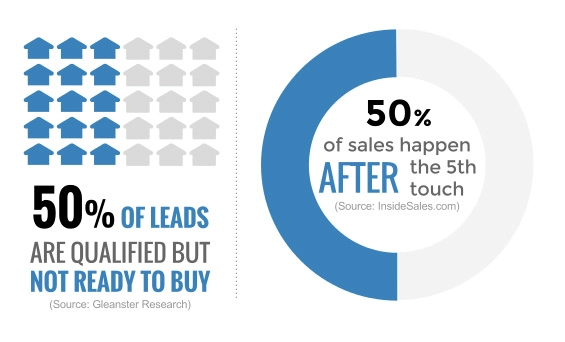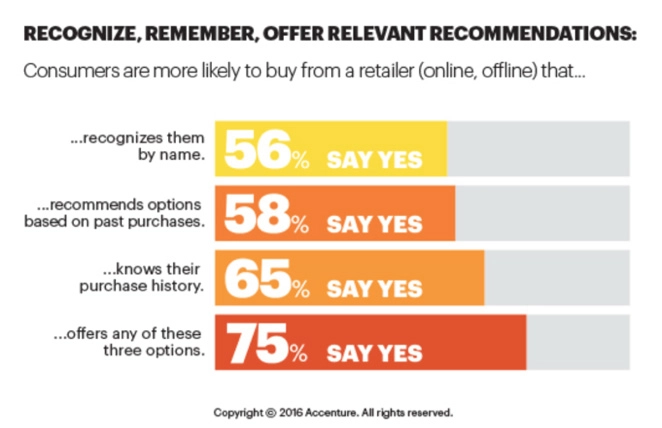
Introduction
One of the most significant shifts in demand generation is the move towards account-based marketing. Traditional marketers utilized a ‘one-to-many’ approach where tracts of messages were blasted to an extensive database.
The age of personalization has now dawned on-demand generation. Marketers need to tailor their messages to suit personas and targeted accounts better. This form of marketing abandons the idea of fishing with a wide net. It instead promotes hunting for your biggest fish with spears.
Marketers need automation tools to enhance their account-based marketing operations. Data shows demand generation automation can increase customer engagement by 68%. It will also strengthen timely communications and increase demand gen opportunities by 58%.
Below are ways that you can leverage the power of these automation tools to enhance your demand generation operations.
5 ways to leverage power automation tools to enhance demand generation-
- Prospect Nurturing
- Content Engagement Tracking
- Predictive Analytics
- Marketing Attribution
- Conversational Chatbots
- Personalization
#1. Prospect Nurturing
Marketers often work endless hours to cram leads down a business’s sales funnel. Customers will receive one size fits all product, content or landing page offers in the hope that a certain percentage of leads would enter the marketing funnel.
It is, therefore, a very soul-sucking experience when after such tireless work, they discover that these leads are not converting into paying customers. Such incidents are a common occurrence for the demand generation marketer who has a misaligned sales and marketing strategy.
The problem is also widespread amongst marketers who lack a thorough understanding of their customer’s journey or are without the necessary sales enablement materials.
Lead nurturing is central to the success of the whole demand generation process. Programs designed to nurture leads can increase your sales-ready leads by 50%.

Source: LeadsBridge
There are billions of prospects out there, but they are inundated with marketing messages from all angles. Your strategy has to be potent and personalized to acquire and retain leads.
Keep it in mind that 82% of potential leads have to view stellar content from your business a minimum of five times before making a purchase. More data shows that you need to touch your leads between seven to thirteen times before they covert.
Use marketing automation, such as HubSpot, to stay in your lead’s vision. Build trust with them by sharing educative content filled with industry developments and trends. This process will boost your online presence, make you a thought leader, and bring your brand’s benefits to light.
Use automation not just to track but manage all early-stage prospects, measure their engagement with content, and channel the data collected to your marketing team.
#2. Content Engagement Tracking
Marketing automation has enabled the analysis of content engagement amongst prospects. Automation platforms can track and analyze content interaction metrics. Such data can help you to understand what content forms work best for your most active accounts and pinpoint the preferred distribution channels.As an illustration, data shows that videos have a 70% higher chance of converting leads to buyers than other content forms.
Your business can therefore not afford to ignore video creation, despite it being a slightly daunting process. More insights into content forms show that 4% of your B2B buyers prefer a podcast when they first encounter a demand generation marketing strategy.
48% of these buyers will pay more attention to webinars after interest in a brand has been raised, and they are in the mid-stage of a sales funnel.
Keep it in mind that resource hubs with bundled content rather than multiple emails produce leads. Armed with such data, you can begin to use marketing automation, such as BuzzSumo or Google Analytics. These automation tools will score your prospects by the content that they have engaged with.
If your resource hub has some emails in it, score each mail. Identify what your leads are more interested in hearing from you about. Remember to indicate their engagement levels.
Such knowledge will direct your demand lead scoring. You can score and rank digital activities and take appropriate marketing activities as well.
#3. Predictive Analytics
Demand gen marketers are drowning in data, meaning that there is a high potential of missing critical tidbits of it.
Moreover, while many marketers have embraced data analytics platforms, most of them do not have ample time to pore through tons of produced reports. Another significant problem that marketers face with data utilization is the lack of analysis skills.
Predictive analysis tools such as InetSoft Style Intelligence can solve all these hindrances to data analysis and assimilation. These tools use advanced statistical process combined with machine learning to produce analytical and valid insights from external signals and existing datasets.
Predictive tools can pore through CRM data and enrich it with external data pints from web scraping, third party vendors, accounts, and contacts.
These marketing automation tools will build predictive models from insights that can help create better data-driven account-based marketing decisions. These predictive models can make lead scoring smarter and pinpoint the exact accounts that should be in your funnel.
#4. Marketing Attribution
When leads convert a marketer without access to robust automation tools may never discover the touchpoint or channel that led to the conversion. It is critical for demand generation marketers to understand their most effective touchpoints.
Such knowledge will help map a customer journey and measure the effectiveness of demand gen efforts. It will also assist you in making the appropriate time and budget allocations across various channels. Marketing attribution connects all your campaigns, channels, and touchpoints with conversions.
This process demonstrates the return on investment of various marketing strategies, especially in a bundled content strategy. There are different attribution models, such as last click, first click, and previous non-direct click models. These model attributes lead converted with the last touchpoint clicked on.
Unfortunately, some demand gen marketers only use click attribution, which has the error of generalization. Leads convert not just because of the influence of one item but the harmonious persuasion caused by various strategies.
A linear and positional attribution model takes into account the various touchpoint the lead encounters across their journey to conversion. The time decay attribution model takes into account the fact that the touchpoints that border the conversion have more influence on the lead than the outliers.
Novel attribution models use IP tracking to analyze leads. This model offers accurate attribution data because it can highlight all the steps that a lead takes before conversion. IP tracking also can help marketers to monitor the behavior of lads after their exposure to your marketing strategy.
Marketing attribution automation tools such as Leadfeeder encourage a plural attribution model for best results.
#5. Conversational Chatbots
Live chats have been on sites for years, and thanks to the rise of chatbot technology, the systems have become smarter. Customers are increasingly craving personalized experiences, so simple live chats that only answer questions are quickly going the way of the dinosaur. Live chatbots can do much more.
They can assist website visitors to identify their best-fit products and accessories. These chatbots are less interruptive of the customer journey but more assisting.
The popularity of conversational chatbots like Amazon Lex, from Amazon Alexa, is rising so fast that by 2020, at least 85% of brand-customers engagement will be through them.
Current live chatbot data shows that 69% of all online buyers prefer them because they supply fast and accurate answers to their questions. Data shows that live chat apps provide a satisfaction rate of 73% to e-commerce buyers.
#6. Personalization

Source: Website-Personalization-Hacks
On critical factor to the success of demand generation marketing strategies is personalization. The more relevant content is to a prospect, their higher the impact it has on them. Many marketers are in the dark about their prospect’s behavior, nature, or interests.
Such a marketer will, therefore, not known the value propositions or pain points that content should address. Marketing automation tools such as Evergage, Optimizely, or Growbots can solve such mysteries.
These tools use AI to pore through rich technographic, demographic, and firmographic data to highlight data points that can tailor personalized marketing experiences.
Over 81% of all customers want brands to understand their personas and to know when the best times that their preferred brands should approach them are.
Another 77% of customers are willing to purchase from a brand with personalized services and recommend it to their colleagues. Personalized content has a 79% chance of engagement from consumers, mainly if the personalization reflects on the customer’s past interactions with the brand.
Conclusion
Automation tools have created a big buzz in marketing as they leverage data and AI to help marketers to make informed decisions.
Novel applications are coming up every other day in a market that is still in its infancy but with high adoption rates. In the US, for instance, over 75% of marketers say that they have one marketing automation tool in their arsenal.
The market is now worth over $6.1 billion and is growing at a 20% plus rate each year. There is, therefore, more to come in the years ahead.
Use the marketing automation features above to optimize your brand’s demand generation strategy. They can help you stay way ahead of the competition.
Our blog
Latest blog posts
Tool and strategies modern teams need to help their companies grow.

B2B media buying has undergone a fundamental shift. What was once a straightforward, ...

It is for fact that today's buying environment demands more. With longer sales cycles...

To build a marketing strategy that drives real results, you need more than creative i...







